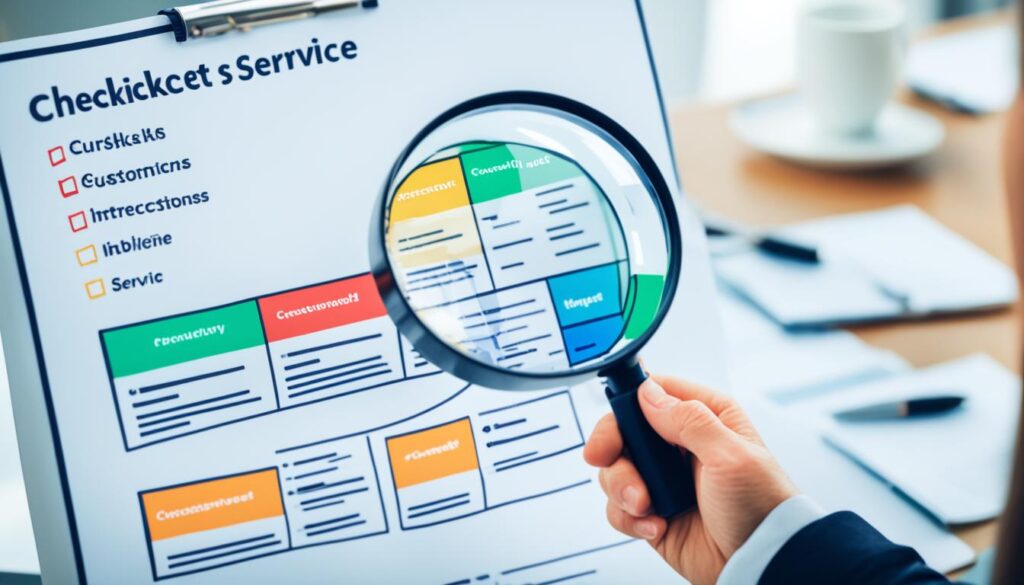Customer service plays a crucial role in the success of any business. When customers have a great experience with a brand, they become loyal advocates who spread positive word-of-mouth. However, when customer service goes wrong, it can leave customers feeling frustrated and disappointed. To prevent losing valuable customers, it’s essential to understand how to fix bad customer service effectively.
When faced with unhappy customers, it’s crucial for brands to approach the situation with genuine empathy. Listening attentively to customers’ concerns is the first step in addressing the issue. By actively listening, brands demonstrate that they genuinely value their customers’ opinions and are committed to finding a solution.
After understanding the customer’s perspective, it’s important to assess the situation thoroughly. This involves gathering all necessary information and identifying any areas where the brand failed to meet the customer’s expectations. By conducting a comprehensive assessment, brands can determine the root cause of the problem and develop an appropriate solution.
Next, brands should strive to ask the customer about their needs and preferences. This step shows the customer that their input is valued and allows the brand to tailor the solution specifically to their individual needs. Providing options and alternatives demonstrates flexibility and a commitment to finding the best resolution.
Once a solution has been agreed upon, it’s essential for brands to deliver it as promised. Timeliness and consistency are key factors in rebuilding trust with unhappy customers. Brands should ensure that the solution is implemented promptly and effectively, without any further inconvenience to the customer.
Following up with the customer after the issue has been resolved is equally important. This step allows brands to further address any remaining concerns and obtain feedback on the customer’s satisfaction with the resolution. By demonstrating a commitment to ongoing support and follow-up, brands can reinforce their dedication to customer satisfaction.
Finally, it’s crucial for brands to address the issue internally to prevent similar incidents from recurring. This involves evaluating the company’s processes, training, and policies to identify areas for improvement. By continuously working to enhance customer service, brands can minimize future issues and create a culture of exceptional customer care.
Key Takeaways:
- Listen attentively to customers’ concerns with genuine empathy.
- Thoroughly assess the situation and identify areas for improvement.
- Ask customers about their needs and preferences to tailor the solution.
- Deliver the solution promptly and consistently.
- Follow up with the customer to ensure satisfaction and address any remaining concerns.
Strategies to Improve Customer Service and Build Brand Loyalty
To improve customer service and build brand loyalty, there are several key strategies that brands can implement. By prioritizing the human touch, streamlining customer interactions, ensuring easy access to information, focusing on quick resolutions, and investing in employee development, brands can enhance the customer experience and foster long-term loyalty.
Offer the Human Touch
One of the most effective ways to improve customer service is by prioritizing person-to-person interactions. Customers appreciate the personal connection and value brands that go the extra mile to understand their needs. By training customer service agents to empathize and actively listen to customers, brands can create a positive experience that leaves a lasting impression.
Streamline Customer Interactions
Moving customers out of interactive voice response (IVR) channels quickly is crucial to providing efficient service. Customers often find IVR systems frustrating and time-consuming. By offering alternative channels such as live chat or callback options, brands can expedite the support process and reduce customer frustration.
Ensure Easy Access to Information
Keeping customer data readily accessible can significantly improve the customer service experience. When agents have quick access to customer information, they can provide personalized and efficient support. Utilizing customer relationship management (CRM) systems and knowledge bases can streamline information retrieval and empower agents to better assist customers.
Prioritize Quick Resolutions
Customers value prompt solutions to their problems. Brands should prioritize efficient pathways to resolutions, focusing on minimizing wait times and addressing issues promptly. By empowering front-line employees to make decisions and resolve customer concerns, brands can demonstrate a commitment to customer satisfaction.
Invest in Employee Development
Providing employees with professional development opportunities and emphasizing work-life balance can have a significant impact on customer service. Well-trained and motivated employees are more likely to deliver exceptional customer experiences. By investing in their growth and well-being, brands can foster a culture of service excellence and build brand loyalty.
Employee Development Initiatives
| Initiative | Description |
|---|---|
| Training Programs | Ongoing training sessions to enhance customer service skills and product knowledge. |
| Mentorship Programs | Pairing new employees with experienced mentors to provide guidance and support. |
| Recognition and Rewards | Incentives for exceptional performance and recognition of employees’ contributions. |
| Flexible Work Arrangements | Allowing employees to have a healthy work-life balance and accommodating their needs. |
By implementing these strategies, brands can not only improve customer service but also build strong brand loyalty. The human touch, streamlined interactions, easy access to information, quick resolutions, and employee development all contribute to a positive customer experience. By consistently delivering exceptional service, brands can create a loyal customer base and drive long-term success.

Identifying and Fixing Bad Customer Service: Key Areas to Address
Bad customer service has the power to leave a lasting negative impact on your company’s reputation and customer retention. Therefore, it is crucial to identify and address key areas contributing to poor customer service. By focusing on these areas, you can effectively fix bad customer service and ensure customer satisfaction and loyalty.
Poorly Trained Customer Service Agents
Customer service agents are the face of your brand, and if they are not properly trained, it can lead to unsatisfactory interactions with customers. Invest in comprehensive training programs to equip your agents with the necessary skills and knowledge to handle customer inquiries and resolve issues effectively.
Negative Language
The language used by customer service agents can greatly impact customer perception. Avoid negative language, such as blaming the customer or making excuses, as it can aggravate the situation and tarnish the customer experience. Encourage agents to adopt a positive and empathetic approach when communicating with customers.
Poor Product Quality
Avoiding customer service issues begins with providing high-quality products. Poor product quality can lead to frequent complaints and dissatisfied customers. Regularly assess and improve your product quality to minimize customer service problems.
Ignoring Customer Feedback and Reviews
Customer feedback and reviews provide valuable insights into areas where your customer service may be lacking. Ignoring or disregarding this feedback can create negative customer experiences. Actively listen to customer feedback and reviews, and use them as an opportunity to address any issues and make improvements.
Not Taking Accountability
Mistakes happen, but it’s important to take accountability for them. Customers appreciate honesty and transparency when it comes to resolving issues. Train your customer service team to take ownership of mistakes and work towards finding suitable solutions.
Lack of Active Listening
Active listening is an essential skill for effective customer service. When customers feel heard and understood, they are more likely to have a positive experience. Train your agents to actively listen, ask clarifying questions, and show genuine empathy towards customers.
Taking Existing Customers for Granted
Retaining existing customers is just as important as acquiring new ones. Avoid taking your loyal customers for granted by ensuring they receive the same level of attention and care as new customers. Implement loyalty programs and personalized communication to show your appreciation.
Rigidity of Policies
Inflexible policies can frustrate customers and hinder problem resolution. Evaluate your policies and identify areas where more flexibility can be offered. Empower your customer service agents to make decisions that go beyond strict policy adherence when appropriate.
Unhelpful Chatbots
While chatbots can be beneficial, they must be helpful and provide relevant assistance. Poorly programmed chatbots or those lacking in-depth knowledge can leave customers feeling frustrated. Regularly monitor and improve the functionality and accuracy of your chatbots.
Difficulty Finding Help
Make it easy for customers to find help when they need it. Ensure that your customer support channels, such as phone lines, emails, or live chats, are easily accessible and well-publicized. Clear and concise instructions for reaching customer service representatives should be readily available.
Poor Response Time
Avoid keeping customers waiting for extended periods of time. Slow response times can lead to frustration and dissatisfaction. Implement strategies to improve response times, such as efficient ticket management systems or automated response acknowledgement.
Creating Barriers to Modify or Cancel Services
Customers should have the freedom to modify or cancel services without unnecessary hurdles. Complex processes or hidden fees can create a negative perception of your customer service. Simplify procedures and make it easy for customers to modify or cancel their services.

To effectively address customer service issues, it is essential to prioritize these key areas and implement appropriate measures. By doing so, you can improve customer satisfaction, retain loyal customers, and prevent future service-related problems.
Leveraging Customer Feedback for Continuous Improvement
Customer feedback is a valuable resource that can help companies improve their customer service and overall customer experience. By actively listening to customer feedback and reviews, companies can gain valuable insights into the pain points and areas of improvement. It’s essential for companies to take accountability for any issues that are identified and show a genuine commitment to addressing them.
Analyzing feedback data is crucial in identifying trends and patterns that highlight areas for improvement. By leveraging data-driven insights, companies can make informed decisions and implement necessary changes to enhance their customer service. This continuous improvement process allows businesses to stay relevant, adapt to customer needs, and provide an exceptional experience.
Making changes based on customer feedback not only helps retain existing customers but also attracts new business. When customers see that their feedback is being heard and acted upon, it builds trust and loyalty. Happy customers become brand advocates, spreading positive reviews and recommending the company to others.
To illustrate how customer feedback can be utilized, consider the following example:
| Feedback Type | Insights | Actions Taken |
|---|---|---|
| Online reviews | Customers expressed difficulty in navigating the website and finding relevant information. | Website redesign to simplify navigation and improve user experience. |
| Customer surveys | Feedback indicated a high demand for additional product features. | Development of new features and regular product updates. |
| Support interactions | Customers reported long wait times when contacting customer support. | Increase in support team size and implementation of a ticketing system to improve response time. |
By utilizing customer feedback, companies can continuously enhance their customer service, address pain points, and provide a exceptional experience that leads to customer loyalty and business growth.

The Importance of Customer Service in Business Growth and Development
Customer service is a critical factor that can greatly impact the reputation, growth, and development of a business. It serves as the direct connection between customers and the company, shaping their overall experience and satisfaction. Delivering exceptional customer service is essential to foster loyalty, retain customers, and drive long-term success.
One key aspect of effective customer service is having well-trained agents who possess the necessary skills and knowledge to address customer needs and concerns. These agents serve as brand ambassadors, representing the company and its values. By prioritizing comprehensive training programs, businesses can ensure that their customer service team is equipped to provide outstanding support and assistance.
Positive language is another crucial element in customer service. Using words that convey empathy, understanding, and gratitude can go a long way in creating a positive customer experience. Customers appreciate being treated with respect and kindness, and this can significantly contribute to their satisfaction and loyalty.
Customers also value high-quality products and services. By consistently delivering products that meet or exceed customer expectations, businesses can enhance their reputation and build trust. Additionally, actively seeking customer feedback and taking it into account can help identify areas for improvement and drive innovation and growth.
Ultimately, placing a strong emphasis on customer-centric approaches and investing in technologies such as helpful chatbots and easy access to support channels can streamline the customer service experience, ensure prompt response times, and provide solutions that meet customers’ unique needs. By continually refining and optimizing their customer service strategies, businesses can position themselves for growth and development in today’s competitive marketplace.
FAQ
What can I do to fix bad customer service?
To fix bad customer service, you can start by ensuring that your customer service agents are well-trained, using positive language, addressing product quality issues, actively listening to customer feedback and reviews, taking accountability for mistakes, and prioritizing the needs and preferences of existing customers.
How can I improve customer service and build brand loyalty?
To improve customer service and build brand loyalty, you can offer customers a personal touch by prioritizing person-to-person contact, minimizing interactive voice response channels, keeping customer data easily accessible, providing pathways for quick resolutions, and investing in the professional development and work-life balance of your employees.
What are the key areas to address when identifying and fixing bad customer service?
When identifying and fixing bad customer service, it is crucial to address poorly trained customer service agents, the use of negative language, product quality issues, ignoring customer feedback and reviews, lack of accountability, poor active listening, taking existing customers for granted, rigid policies, unhelpful chatbots, difficulty finding help, slow response times, and creating barriers to modify or cancel services.
How can I leverage customer feedback for continuous improvement in customer service?
To leverage customer feedback for continuous improvement, actively listen to customer feedback and reviews, take accountability for any issues identified, analyze feedback data to identify pain points, and make data-driven changes to enhance the customer experience.
Why is customer service important for business growth and development?
Customer service plays a vital role in a company’s reputation, growth, and development. It directly connects businesses with customers, and poor customer service can negatively affect customer satisfaction and retention. By prioritizing well-trained agents, positive language, product quality, customer feedback, accountability, active listening, existing customer relationships, flexible policies, helpful chatbots, quick response times, and customer-centric approaches, companies can create positive customer experiences, foster brand loyalty, and drive long-term success.
